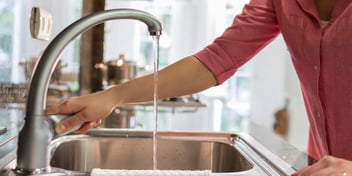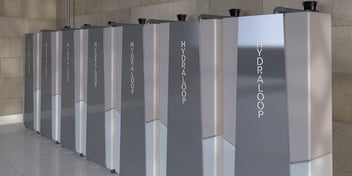Close study of water use behaviour offers new opportunities to reduce use
Findings from a water use study conducted by Sydney Water are offering new insights into customer behaviours, as well as offering up some key opportunities for how the utility will engage with the community around water saving.
The study involved the installation of detailed loggers on about 200 customer water meters across Sydney Water’s network, with each logger capable of recording minute water consumption measurements.
Speaking on the Australian Water Association podcast series about customer water-use behaviours, Sydney Water Strategic Analytics Manager Andrew Woods said the original aim of the study was to inform our long-term demand forecasting.
“But then, the drought came upon us in the Sydney area and we refocused our attention on drought response in terms of the end-use study,” he said.
“The loggers record very minute measurements of water consumption; it's about 14 millilitres, every 10 seconds. With the help of our university partner, we were able to define different types of water use, like shower, washing machine and toilet flushing, separately.
“The measurements focus on the amount of water used on a timescale. So, how long that flow goes for and what the patterns of flows are across that time. Our accuracy is around about the 80 to 85% mark, which is pretty good.”
Aside from internal water use in households, the study is now also focusing on drivers for outdoor water use and how these usage patterns are impacted by weather forecasting, Woods said.
“In periods of lesser rain, outdoor usage went up. As soil got dryer, that also increased outdoor use volumes as well. The volume and, therefore, the duration of outdoor events are highly impacted by the combination of temperature, pan evaporation, and moisture,” he said.
“The interesting thing we want to investigate next is how forecasting affects people's outdoor water use. If the forecast yesterday said ‘it's going to rain tomorrow’, does that impact the outdoor behaviour or not?
“We also noticed that swimming pool owners need a lot of attention from us. Households with a swimming pool use on average double the water outside than what a property without a swimming pool would use.”
Weather watch
Woods said an important aspect of the study was informed by weather data, allowing Sydney Water to analyse water use data in correlation with weather events.
“On a monthly basis, the Bureau of Meteorology gives us weather data attributed to five kilometre grids throughout our area of operations. This allows us to place our customers within those grids,” he said.
“This data was incredibly important to the study. It enables us to connect how the weather events across our network impact the end use results — how they interrelate and how they correlate is a very strong guide for us.”
In terms of indoor water use and weather patterns, Woods said shower-use patterns have offered some particularly interesting insights in terms of customer preferences, as well as water-efficient shower hardware.
“People have more frequent showers when it's hotter. They also have longer showers when it's colder. People are probably running their showers for a minute to get the hot water up to the shower during winter, and probably not waiting as long during the summer,” he said.
“We collected information about customer’s shower hardware and whether they think they have an efficient shower head or not. Through the survey, we found that about 120 out of 200 participants responded to the survey as having efficient shower heads.
“But, when we compare that data with the actual measurement of the flow rates for those showers, we found about two thirds of those people do not have efficient shower heads, which was interesting in itself.
“As we dig deeper into the efficient shower heads, we are finding that the people who have efficient shower heads tend to spend on average one minute longer in the shower than those who don’t have efficient shower heads."
Coming out in the wash
Woods said other interesting insights drawn from the study include information about washing machine use, with significant differences in water consumption dependent on machine models.
“Front-loading washing machines, at least the more modern ones, use about half as much water as a top-loading washing machine. There's a big opportunity there for us in terms of helping reduce water use by way of introducing a washing machine rebate program,” he said.
“A front-loading washing machine uses about 60 litres per load. A top-loading washing machine uses well above 120 litres per load. So there is a definite opportunity there in encouraging our customers to use front loading washing machines.
Woods said the study is ongoing and, while much of the study has been focused on drought response, informing campaigns around reducing water use and designing restrictions, the end-use study will continue to inform how Sydney Water engages with customers.
“The water restrictions still exist in Sydney. Campaigns will go on, encouraging people to use less water. And as such, the end-use study is continuing.
“The end-use study will go on as a study looking at the behaviours that we experienced in the sample during the restrictions and to continue to inform our drought response, helping us with our long-term forecasting and design of water efficiency program.”
Woods said Sydney Water is keen on sharing the learnings from the study with other water utilities, as well as consider comparing data across different states.
“I know that there's been studies in Queensland, I know there's been studies in Melbourne. I think there's a study going on right now in Western Australia. It would be interesting to compare our analysis on customer behaviours in different cities,” he said.
“We are keen on setting up regular conversations around that to share our findings and to encourage people to look in the same places we're looking, and vice versa.”
[embed]https://omny.fm/shows/australianwater/andrew-woods-customer-water-use-behaviours[/embed]


